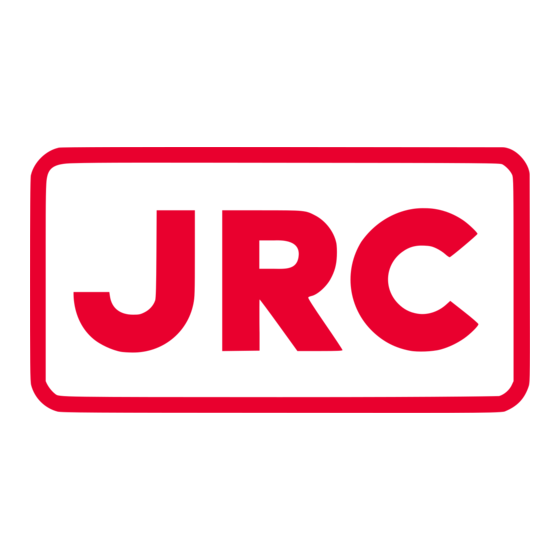
Advertisement
Quick Links
DOPPLER CURRENTMETER
Specifications
Tidal current
Current speed
: 0 -- 9.9 kt
Current direction : 360 , numeric and Rhumb (32 compass points) display
Measured layer
: Absolute three layers, relative two layers (three layers can
be measured in relative current mode)
Measured depth : 2 -- 100m or more(70% or less of the depth)
(Note)The measured depth may vary depending on sea
conditions.
Depth setting
: Arbitrary at 2 -- 200m
Reference
: Doppler or GPS
Ship speed
Ahead-astern
: -10.0 -- 30.0 kt
Starboard-port
: -9.9 -- 9.9 kt
Bearing display
: 360
Measured depth : Relative to ground : 2 -- 250m, relative to water : 3m deep
or more (simultaneous display of depths relative to ground
and water)
(Note) The measured depth may vary depending on sea or
sea bottom conditions.
Other
: Manual sea bottom tracking system
Display
Display
: 15 inch color LCD
Display mode
: Tidal current, ship speed, fish school, progress and ship's trail
Numeric display : Current direction/speed (absolute three layers, relative two
layers), measured depth, ship speed relative to ground/
ship course, ship speed relative to water/ship course,
compass direction, distance, ahead-astern ship speed/
starboard-port ship speed, trip distance or time, depth,
Outline Drawing
Unit: mm
Mass: 5kg
Color Display Unit
NWU 164
Keyboard
( bottom)
Transducer Unit CFT-067
Appearance and specifications may be subject to change without notice.
water temperature
Graphic display
: Absolute tidal current vector, relative tidal current vector,
ship speed vector, temperature graph, FishFinder echo
display, alarm ringer
Alarm
: Current speed, ship speed, distance, timer, temperature
Input/Output Signals
Inputs
:
Bearing data (NMEA0183), signal name [COMPASS IN]
$_ _HDT, $_ _VHW, $_ _HDM, $_ _HDG
Latitude/longitude data (NMEA0183), signal name [GPS IN]
$_ _RMC, $_ _GGA, $_ _GLL, $_ _VTG
Water temperature data (NMEA0183), signal name [TEMP IN]
$_ _MTW
Interference rejection triggers, signal name [TRIG1, TRIG2]
Outputs
:
Ship speed/current data (NMEA0183 Ver2.3/3.0),
signal name [NMEA OUT] (1 port)
$VDVBW, $VDVLW, $VDDBT, $VDCUR,
$VDRMC (Note :This is output only when latitudinal and
longitudinal data $_ _RMC is input from an
external equipment.)
$VDHDT: (Note :This is output only when bearing data
$_ _HDT is input from an external equipment.)
distance-run contact signals: 200 pulses/nm
Signal name [200P1 -- 200P6] (6 ports)
JRC format signals, signal name [UART1, UART2]
Power supply
: 20V -- 32.4V DC, 200VA or less
Operating temperature : -15 to +55 C
Transmitting frequency : 240kHz
Unit: mm
Mass: 1kg
NCH 595
Signal Processor NJC-23C
Bow Mark
Unit: mm
Mass: 25kg
For further information, contact:
URL
Since 1915
Main Office: Nittochi Nishi-Shinjuku bldg.
10-1, Nishi-Shinjuku 6-chome
Shinjuku-ku, Tokyo 160-8328, Japan
Telephone: +81-3-3348-4099
Facsimile: +81-3-3348-4139
Overseas Branches : Seattle, Amsterdam, Athens
Liaison Offices : Taipei, Manila, Jakarta, Singapore,
Hanoi, New York
ISO 9001 ISO 14001 Certified
DOPPLER CURRENT METER
Unit: mm
Mass: 23kg
Quick acquisition of tidal current and
fishfinding information.
Improved functions and features,
eng
with space saving design
support efficient fishing operations.
''
Advertisement

Summary of Contents for JRC JLN-628
- Page 1 : Tidal current, ship speed, fish school, progress and ship's trail Signal name [200P1 -- 200P6] (6 ports) JRC format signals, signal name [UART1, UART2] Numeric display : Current direction/speed (absolute three layers, relative two layers), measured depth, ship speed relative to ground/ Power supply : 20V -- 32.4V DC, 200VA or less...
- Page 2 You can upgrade the JLN-628 to acquire more functions and display more information currents. Own ship's drift can be grasped at a glance. Rips between two different by connecting your other JRC and optional products. currents can also easily found on the graphic display of current, water depth and temperature* changes with time.












